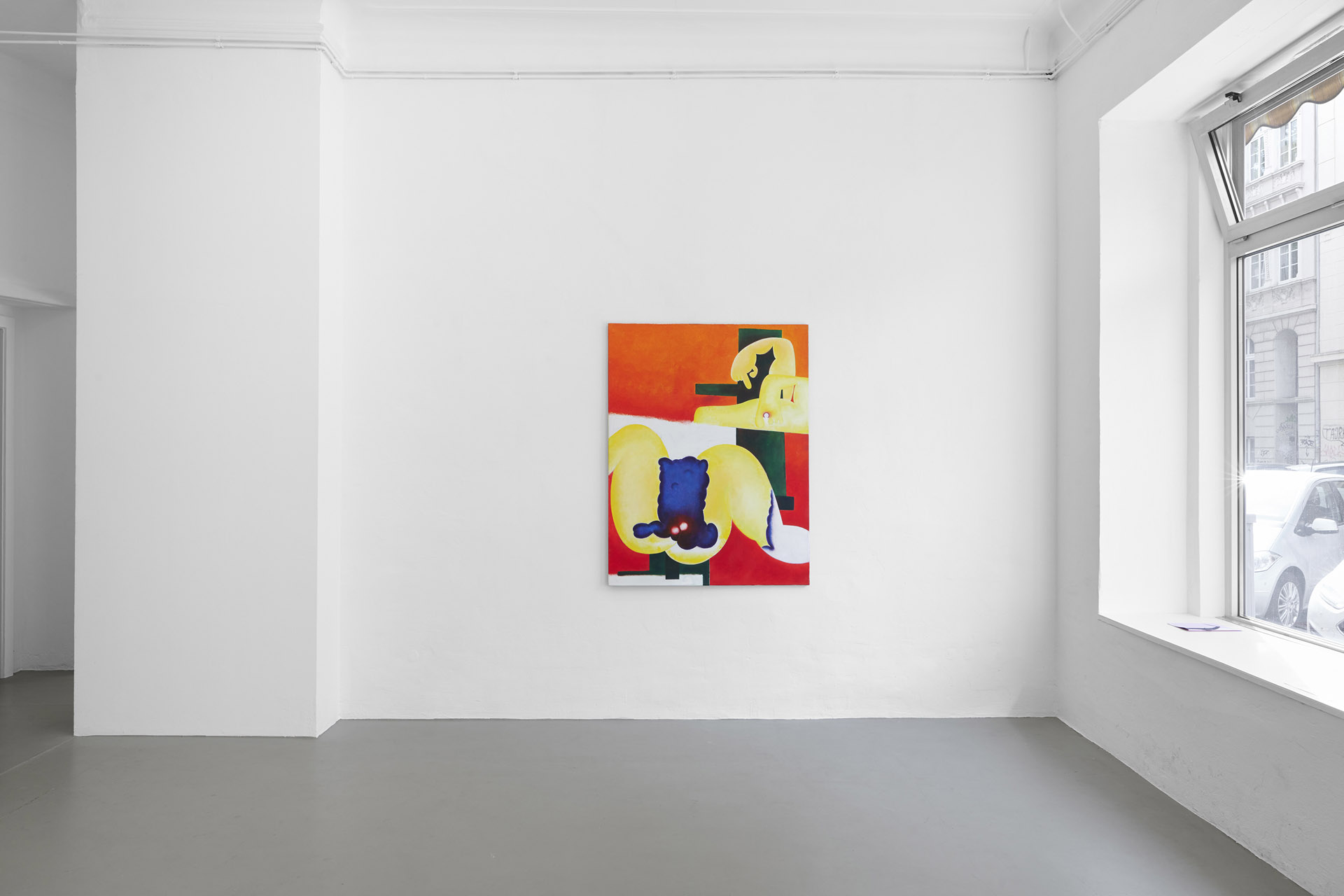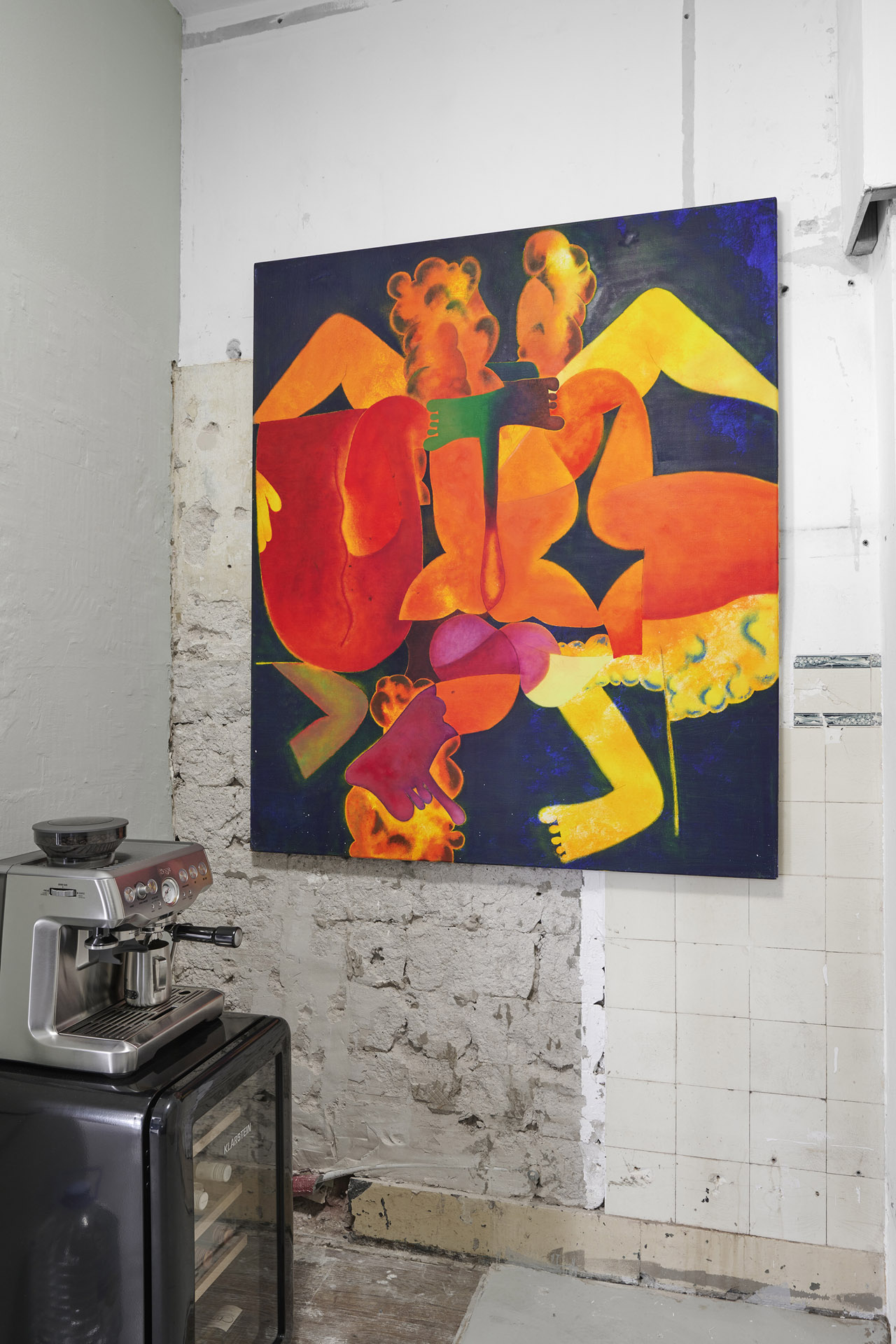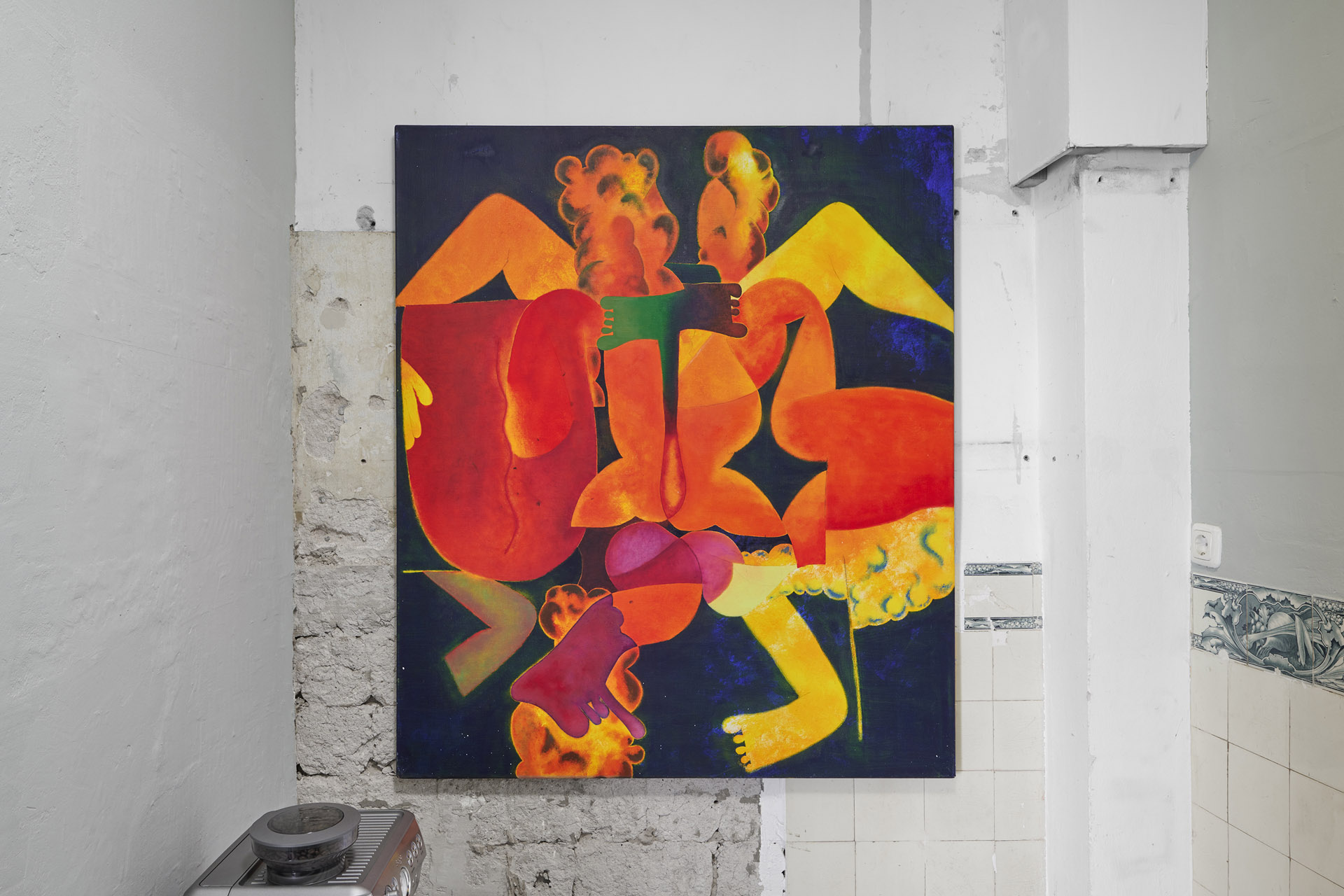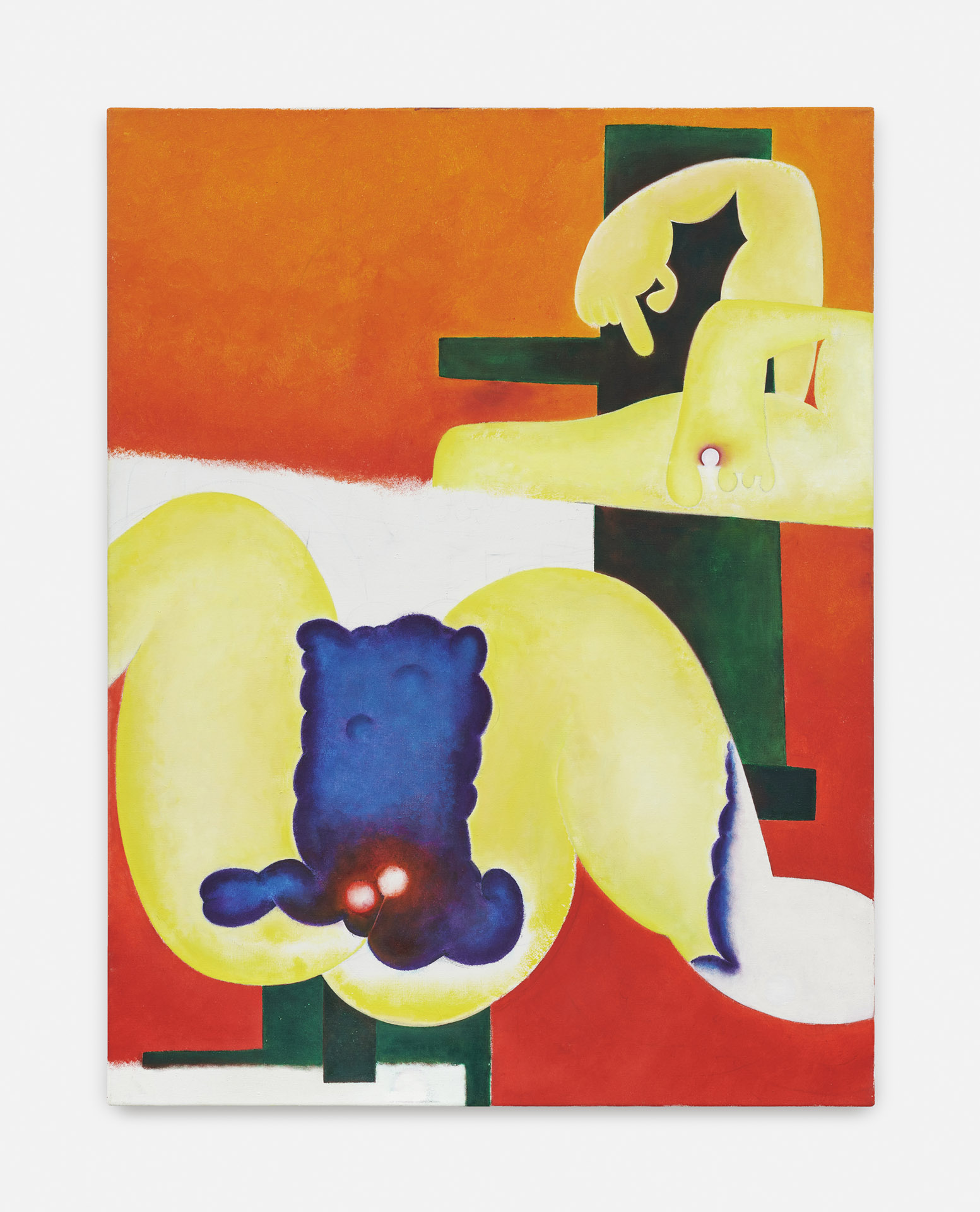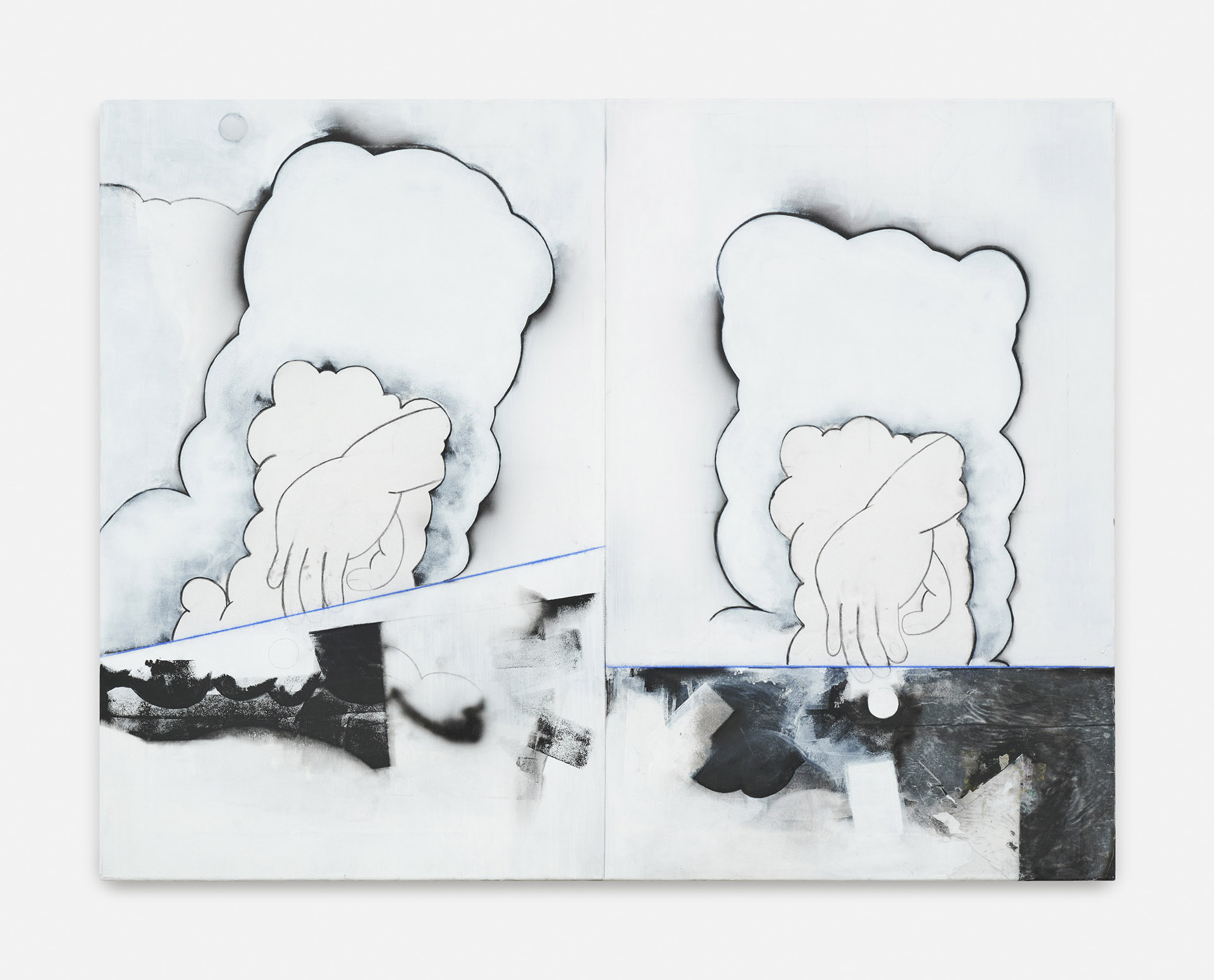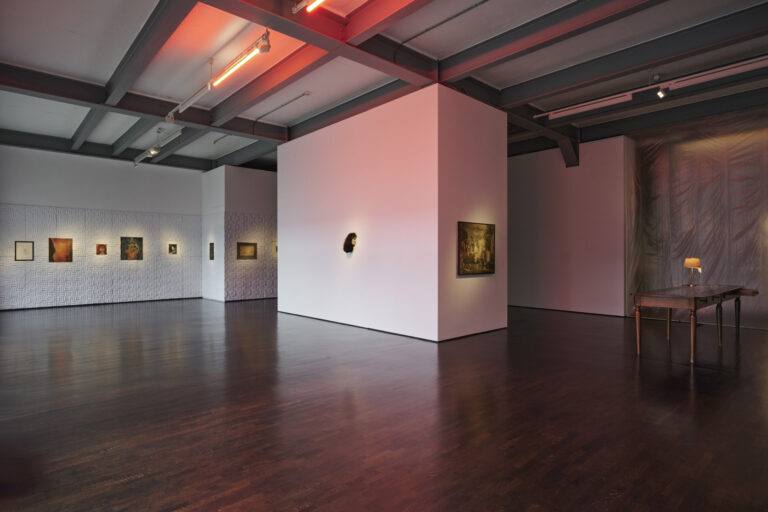Artist: Lutz Driessen
Exhibition title: living
Venue: Galerie Khoshbakht, Cologne, Germany
Date: May 15 – July 23, 2022
Photography: all images copyright and courtesy of the artist and Galerie Khoshbakht, Cologne
An arrow pierces the bare chest of the young man. The red coat draped loosely over his shoulders emphasizes the body’s contour. In his left hand, his arm bent and resting on his knee, his body turned slightly to the right, he holds another arrow. Unimpressed by his wounding, he gazes raptly into the distance. Agnolo Bronzino’s Saint Sebastian, circa 1528/29, is unharmed and immaculately beautiful, downright delightfully seductive. In comparison, other of the extremely numerous iconographic representations of the patron saint are more explicit in their display of pain and suffering, showing the body tied to a tree or column, pierced by a multitude of arrows. With the Renaissance, the saint is increasingly stylized as an icon of masculine beauty, sensuality, and lust.
Bronzino’s painting, which “so prominently stages Sebastian’s arm with the arrow and formally offers it to the devout viewer for veneration at the lower edge of the picture” [1] serves Lutz Driessen as a starting point for his exploration of body conditions. For his first solo exhibition at Galerie Khoshbakht, he produced new drawings and paintings under the title living, which repeatedly take up Sebastian’s forearm and hand position as a pictorial element. The tenderly holding, touching gesture is joined by a pointing hand with an extended, perhaps exploratory index finger. Next to it, feet, thighs and other bulging outgrowths waft and wander, transgressing and dissolving gender— oscillating between buttocks, testicles, breasts, and vulva lips. The compositions are reminiscent of what Klaus Theweleit calls fragmentary bodies (“Fragmentkörper”) in his major work “Männer-phantasien” (1977): The inability to position oneself beyond a body armor when hierarchical boun-daries no longer exist and the related fear of body dissolution, which Theweleit describes as the cause of the emergence of fascism, abuse of power, violence, and war.
Some of the canvases worked on by drawing are sewn together like diptychs and display their seams like scars. Also central are the carved-out contours, which, in an attempt to separate the inside from the outside, rather emphasize their elimination. The lack of an outside through isolation can lead to the loss of a subjective body perception, even to depersonalization, the detachment from the self. Didier Anzieu speaks here of the skin-ego: “Just as the skin has a supporting function for the skeleton and the musculature, the skin-ego serves to hold the psyche together.” [2] The skin is not only a protective cover, but also a contact surface with the environment and thus an instance of self-assurance. With the outbreak of the plague in Rome after 1348, Saint Sebastian gained new prominence: the idealized representation of the body as a welcome contrast to the vulnerable bodies battered and decayed by the pandemic. Sebastian, who survived the martyrdom of the arrow by a miracle of God, thus becomes “a promise that the faithful, even if they must die the black death, will be given a timeless, supernatural, immaculate body” [3].
Another recurring motif in Driessen’s image composition is the circle or the ellipse—as a hole or a gap, as an empty space, as a body orifice, or shining sacrally as a halo. The question of the body’s demarcation from the outside world is transferred directly to the canvas: Driessen’s works point to something outside the frame—and outside the body. Drawing from this extensive repertoire of forms, Driessen works through numerous variations of repetition in order to get to the bottom of the essential: In their repetitive take-up of pictorial elements, the large-scale drawings might appear to be exercises or preliminary sketches of the paintings. On closer inspection, however, they expose in their sincerity what is condensed—two-dimensionally, multiply applied and removed—in the paintings. In the end, what remains is what unites, “where solid and contourless meet and merge, even and especially in decay” [4].
-Text: Miriam Bettin
Quotes freely translated from German editions:
[1] Bastian Eclercy, „Agnolo Bronzino, Heiliger Sebastian, um 1528/29“, in: Bastian Eclercy (Ed.), Maniera. Pontormo, Bronzino und das Florenz der Medici, Munich 2016, p. 141-142.
[2] Didier Anzieu, Haut-Ich, Berlin (6th ed.) 2016 (1st ed.: Frankfurt am Main 1985).
[3] Daniela Bohde, „Ein Heiliger der Sodomiten? Das erotische Bild des Hl. Sebastian im Cinquecento“, in: Mechthild Fend, Marianne Koos (Ed.), Männlichkeit im Blick. Visuelle Inszenierungen in der Kunst seit der Frühen Neuzeit, Cologne 2004, p. 79-98.
[4] Klaus Theweleit, Männerphantasien, Berlin (2nd ed.) 2020 (1st ed.: Frankfurt am Main / Basel 1977/78).
Lutz Driessen, living, 2022, exhibition view, Galerie Khoshbakht, Cologne
Lutz Driessen, living, 2022, exhibition view, Galerie Khoshbakht, Cologne
Lutz Driessen, living, 2022, exhibition view, Galerie Khoshbakht, Cologne
Lutz Driessen, living, 2022, exhibition view, Galerie Khoshbakht, Cologne
Lutz Driessen, living, 2022, exhibition view, Galerie Khoshbakht, Cologne
Lutz Driessen, living, 2022, exhibition view, Galerie Khoshbakht, Cologne
Lutz Driessen, living, 2022, exhibition view, Galerie Khoshbakht, Cologne
Lutz Driessen, living, 2022, exhibition view, Galerie Khoshbakht, Cologne
Lutz Driessen, living, 2022, exhibition view, Galerie Khoshbakht, Cologne
Lutz Driessen, living, 2022, exhibition view, Galerie Khoshbakht, Cologne
Lutz Driessen, living, 2022, exhibition view, Galerie Khoshbakht, Cologne
Lutz Driessen, living, 2022, exhibition view, Galerie Khoshbakht, Cologne
Lutz Driessen, living, 2022, exhibition view, Galerie Khoshbakht, Cologne
Lutz Driessen, o.T) Sebastian 1528 / 29, 2022, 130 × 100 cm, charcoal, flashe and oil on canvas
Lutz Driessen, Neutrale Struktur, 2022, 140 × 120 cm, charcoal, flashe and oil on canvas
Lutz Driessen, o.T. (Sebastian 1489 / 90), 2022, 130 × 100 cm, charcoal, chalk, flashe and oil on canvas
Lutz Driessen, o.T. (Sebastian 1623), 2022, 130 × 100 cm, charcoal, flashe and oil on canvas
Lutz Driessen, o.T. (Sebastian 1910), 2022, 130 × 100 cm, charcoal, flashe and oil on canvas
Lutz Driessen, Triple Aura, 2022, 100 × 130 cm, charcoal, gesso, chalk, flashe, acrylic paint on synthetic fibre




